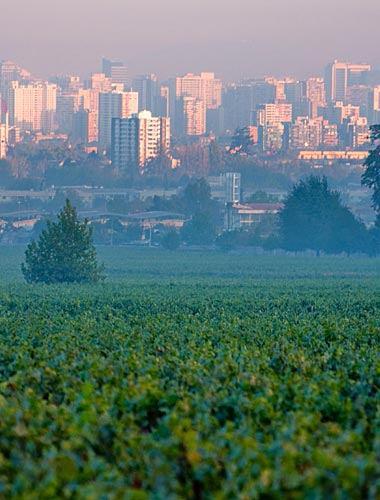COUSIŇO MACUL
The Maipo Valley has proved to possess the ideal conditions for the production of fine wines since as far back as the mid 1500's, the period when Juan Jufré was rewarded with lands in this valley in recognition of his help on the Spanish conquest. These lands, located in the area still known as Macul, at the foot of the Andes mountains, are associated with the origins of wine making in Chile.
In 1856, Matias Cousiňo, a visionary industrialist who saw the future in the production of premium quality wines, brought the old Macul Estate. He recognised the exceptional conditions of the Maipo Valley and the tremendous value of this estate situated just on the outskirts of the capital city of Santiago. His many travels took him often to Bordeaux, where he consolidated the idea of building a European style winery. His first objective was to introduce the prestigious grape varities of Bordeaux.
In 1863 Matias died and left his estate to son Luis who, in order to carry out his father's vision travelled to Europe in 1860, just before the Phylloxera devastation, and brought back to the Macul Estate Cabernet Sauvignon wines from Pauillac, Semillon and Sauvignon wines from Martillac, and Pinot Noir and Chardonnay from Burgundy.
The current generation of Cousiňos continue to make their wines with the grapes that come from their own vineyards. This practice gives the winemaker the opportunity to make wines that are tremendously consistent in style year in and year out.
Cousiňo Macul is today the oldest Chilean winery still in the hands of the original founding family, with a yearly production of over 250,000 cases, you can find Cousiňo Macul wines in over 50 countries with a product exemplifying the most modern vinification technology and a centenarian tradtion of quality.

The capital city of Santiago has expanded to the point of completely surrounding the Macul estate, in the southeast of the city. The vineyards were planted at the foothills of the Andes mountains, where the soil is of a calcareous nature. The soil varies from thin and rocky in the higher parts of the slopes to deeper and more fertile towards the flat valley.
Rows are planted north to south, thereby exposing the vines to the sun as it moves from east to west. As the snow melts in the spring and summer, the Andes mountains provide an ample sourse of pure and fresh water to irrigate the vineyards.

